Central Research Laboratory
NIMR Central Research Laboratory (CRL) and Activities
Management of the Nigerian Institute of Medical Research reactivated the Central Research Laboratory (CRL) in May 2019.
The mission is to give researchers the edge to compete with international counterparts. The aim of the CRL is to provide access to the state-of-the-art equipment, facilities and technical expertise essential for the thriving of medical research in Nigeria. The laboratory promotes scientific thinking and experimental exposure for biochemical and clinical researchers. It also provides students with hands-on experience with advanced research training. The CRL is equipped with modern equipment to service the research needs of the relevant research Departments of the Institute and the public. It intends to advance research in most health research disciplines including Biological and Clinical sciences and compliment other specialized departments of the Institute.
Opportunity of the NIMR CRL
NIMR expect over 200 Biomedical and Clinical Scientists as end-users of this facility. There is a high demand by students (Masters and Ph.D.) for the use of the State-of-the Art facility for research. We therefore envisage that the CRL will be self-funded through a revolving funding scheme in NIMR. Alliance with other Institutions through the facility will widen the level of collaborations between this research laboratory and other health research related institutions. It will serve as Centre of excellence for quality molecular and genomics analysis thereby reducing the huge amount of money spent on training Biomedical Research Scientists in related centres abroad. Below are list of equipment
Our Team

Dr. Bamidele Iwalokun
Director Central Research Laboratory/Deputy Director of Research

Dr. Ngozi Mirabel Otuonye
Laboratory Manager & Deputy Director Medical Laboratory Services
| SN | STAFF | DESIGNATION |
| 1 | Dr. Iwalokun BA | Deputy Director of Research |
| 2 | Dr. Chika Onwuamah | Chief Research Fellow |
| 3 | Dr Fowora Muinah | Senior Research Fellow |
| 4 | Dr. Azuka Okwuraiwe | Senior Research Fellow |
| 5 | Dr. Olusola Ajibaye | Senior Research Fellow |
| 6 | Dr. Babatunde James | Adjunct Research Fellow |
| 7 | Mr. Yussuf Itse-Nyam | Laboratory Technologist |
| 8 | Mrs. Joy Akinbami | Scientific Officer |
| 9 | Miss Seunfunmi Adeeko | Project Staff |
| 10 | Mrs. Rukayat Jimoh | Project Staff |
| 11 | Mrs. Rukayat Jimoh | Project Staff |
| 12 | Mr. Christopher Ochuko | Project Staff |
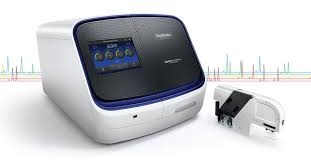
Seqstudio PC model OPTIPLEX XE2 (SN: 232001014)
The Applied Biosystems SeqStudio Cartridge v2 is an all-in-one and easy-to-use reagent cartridge that includes capillaries, universal polymer, buffer, and pump required to run on the SeqStudio Genetic Analyzer System. The universal polymer allows for flexibility to perform Sanger sequencing and fragment analysis on the same instrument run with the same cartridge. The SeqStudio Genetic Analyzer System was installed and currently in use. Applications include: Comparative Sequencing (Somatic Mutations - 10:50), De Novo Sequencing - Low to Mid Throughput, Fragment Analysis (Denaturing), Rare Variant Sequencing, Resequencing, Short PCR Product Sequencing, Short Read Sequencing
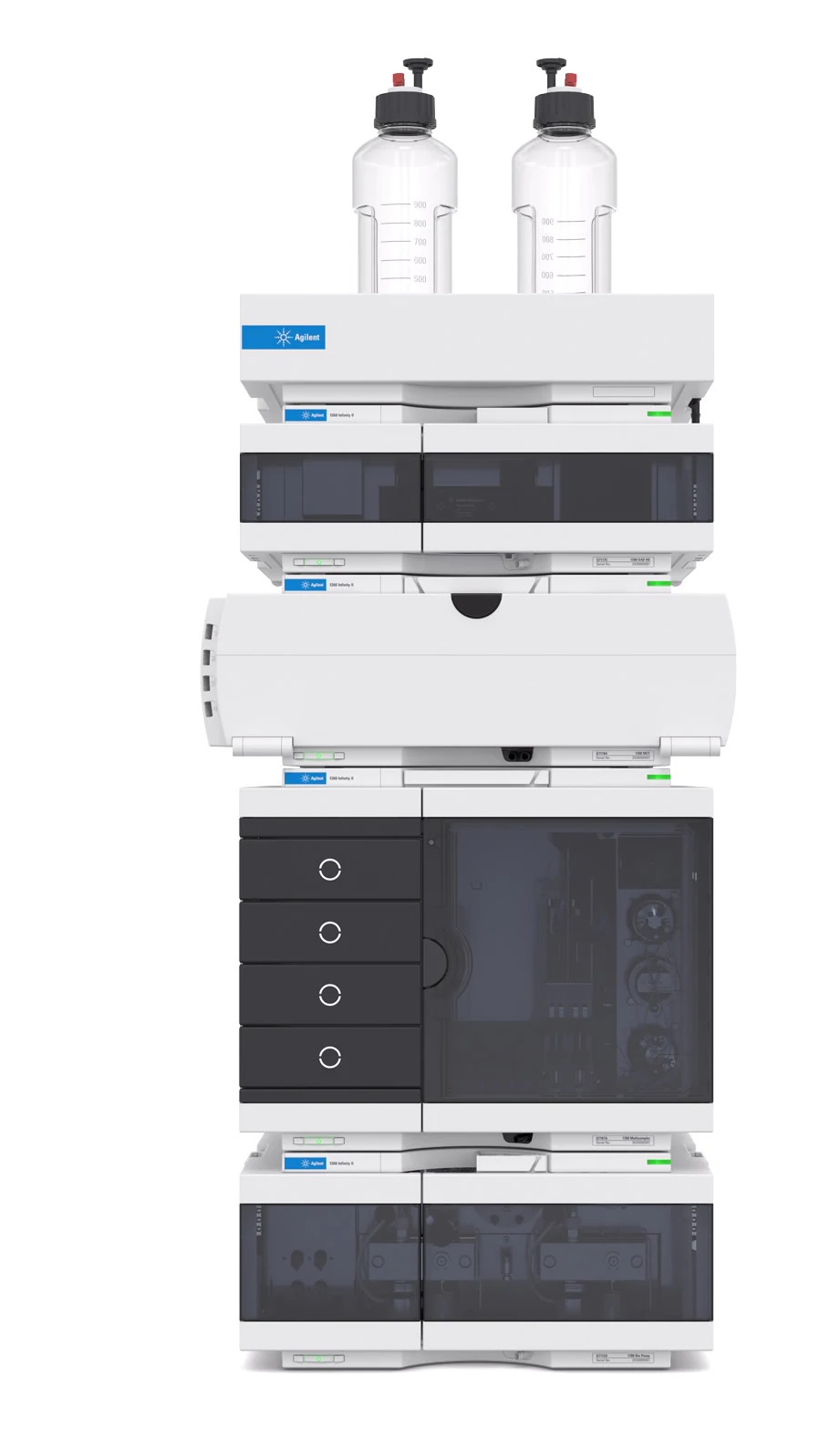
HPLC Agilent 1260 Infinity II (DEAEQ22974)
HPLC Agilent 1260 Infinity II is used to identify and validate protein bio-makers, it is also used to discover, identify, characterize and quantify protein or antibodies. Pharmaceutical products are tested to ensure efficacy, safety and control. Products derived from biotechnology needs to be tested for product impurities, post-translational modifications, aggregations and/or adsorption.
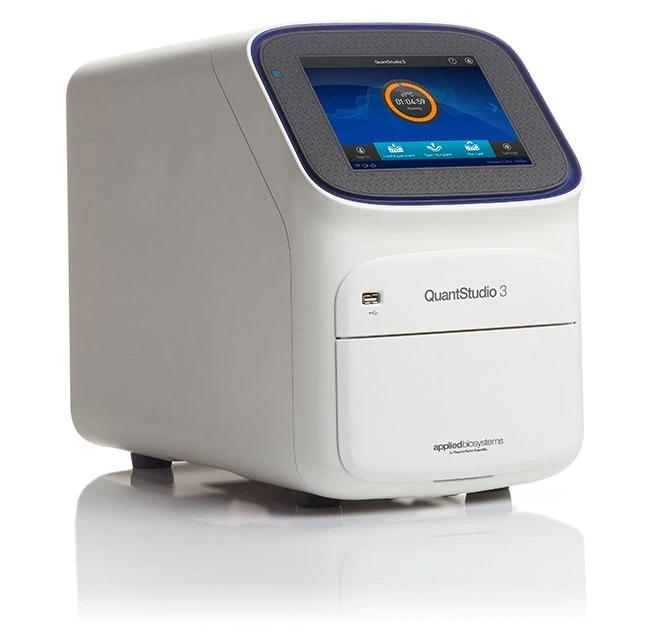
Qualitative and Quantitative Realtime PCR (QS3) (Serial No: 272310855)
The CRL provides research services in primer and probe design (Taqman chemistry) for realtime detection and quantitation of pathogens in biological samples as well as monitoring gene expression in cells using RTPCR Quant Studio 3(QS3). (Thermofisher Scientific USA).
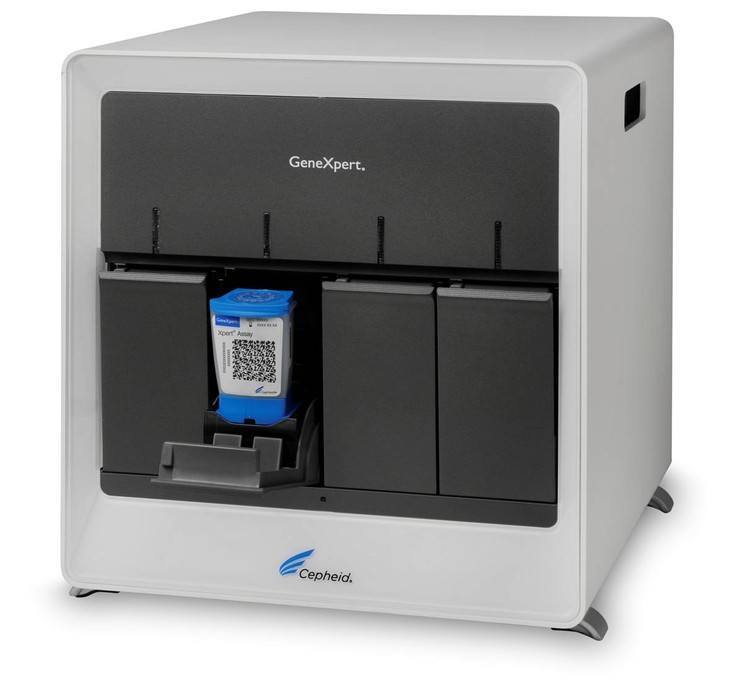
In-Vitro Gen Thermofisher Scientific Flowcytometer (Serial No: 2AFC222501018)
Flow cytometry is a technology used to count and distinguish cells of different types in a mixture by quantitating their structural features. Therefore, flow cytometry has great advantages compared to traditional microscopy since it permits the analysis of a greater number of cells in a fraction of the time. Flow cytometry is routinely used in basic research, clinical practice, and clinical trials. Uses for flow cytometry include: Cell counting Cell sorting Determining cell characteristics and function Detecting microorganisms Biomarker detection Protein engineering detection Diagnosis of health disorders such as blood cancers. In-Vitro Gen Thermofisher Scientific Flowcytometer also, has been installed
Central Research Laboratory documents
Click on the link to download
NEW EQUIPMENTS
DESCRIPTION
VIDAS® and MINI VIDAS® instruments are single-dose strip-based multiparametric immunoassay systems designed to help provide highly sensitive and specific laboratory results of food-borne pathogens from food and other biological samples. They operate based on Enzyme linked fluorescence Assay (ELFA) technology. They are also well supported with automation, traceability, multiparametric reagents/kinetic reactions and connectivity to quality control programs and Laboratory Information Management Systems (LIMS). It is on this basis that VIDAS® and MINI VIDAS® derived their rapidity in result generation, robustness, accuracy, reliability and endorsement by more than 3,000 laboratories globally, including NIMR Food Biosafety Laboratory.
KEY FEATURES OF MINI VIDAS® AND VIDAS ® SYSTEMS
- Both are benchtop systems
- Low power concumption (Power 280VA maximum, Electrical current, 3 – 12 A)
- Low heat emission (~ 921 BTU/Hr)
- High quality easy-to-use barcode –labeled reagents
- VIDAS UP coli O157 (including H7)
- VIDAS SLM
- VIDAS LIS
- VIDAS LMO2
- VIDAS SET2
- VIDAS CAM
- VIDAS LMX
- VIDAS UP Salmonella (SPT)
- VIDAS UP Listeria (LPT)
- Minimum maintenance required
- Uses Solid Phase Receptacle (SPR) platform for reagent mixing, reaction and fluorescence generation (SPR is both the pipetting device and the reactor)
- Single test covering multiple pathogens (i.e. Parametric)
- Two in one technology (ELISA + Fluorometry) called ELFA
- Multiple pathogens and toxins detection in one test
- Campylobacter
- Salmonella enterica serovars
- Listeria species
- Shigella serogroups
- coli serotypes (E.g O157:H7)
- Staphylocus aureus
- Enterotoxins
- Shiga toxins etc
- Uni or bidirectional interface to Laboratory Information Management System (LIMS)
- Rapid Results due to automation, efficient workflow and connectivity to quality data processing soft ware.
- Analytical software for the detection different food-borne pathogens
- On-board Quality control Program
- Integrated Computer Screen and printer
- System alert for errors and available results
- Pilots and controls analyses with complete security
- Load and go for stat testing capabilities
Pathogen Detection uses of VIDAS® AND MINI VADAS®
For Personal Care Testing
- Pathogen detection
- Quality assurance testing
For Food Quality Control
- Food Pathogen detection
- coli O157 (including H7)
- Listeria sp. (48 hours and next day)
- Salmonella (48 hours and next day)
- Staphylococcus Entertoxin
- Listeria monocytogenes (48 hours and next day)
- Campylobacter
- Quality assurance testing
Veterinary Diagnostics
- The VIDAS® system is a multiparametric immunoassay instrument that helps veterinary laboratories to provide better care and analyze animal samples with the highest level of accuracy.
- Providing the most reliable results in a short amount of time, the VIDAS® system helps your veterinary laboratory save time and resources by eliminating unnecessary diagnostic tests. This allows your lab to identify and treat animal diseases with precision and efficiency.
- The range of tests for veterinary applications also include tests that can be used for canine species: VIDAS® Progesterone and VIDAS® T4.
VIDAS & MINI VIDAS: PATHOGEN DETECTION PUBLICATIONS
Salmonella SLM:
- Evaluation of VIDAS® Salmonella (SLM) Immunoassay Method with Rappaport-Vassiliadis (RV) Medium for Detection of Salmonella in Foods: Collaborative Study. Authors: Wendy A. McMahon, Ann M. Schultz and Ronald L. Johnson. Page start: 867
Listeria sp. (LIS):
- Evaluation of the VIDAS® Listeria (LIS) Immunoassay for the Detection of Listeria in Foods Using Demi-Fraser and Fraser Enrichment Broths, as Modification of AOAC Official Method 999.06 (AOAC Official Method 2004.06). Authors: Karen M. Silbernagel, Robert P. Jechorek, Amanda L. Kaufer and Ronald L. Johnson. Page start: 750
- VIDAS® Enzyme-Linked Immunofluorescent Assay for Detection of Listeria in Foods: Collaborative Study. Authors: Vidhya Gangar, Michael S. Curiale, Armando D’Onorio, Ann Schultz, Ronald L. Johnson and Vincent Atrache. Page start: 903
Listeria monocytogenes II (LMO2):
- Evaluation of VIDAS Listeria monocytogenes II (LMO2) Immunoassay Method for the Detection of Listeria monocytogenes in Foods: Collaborative Study. Authors: Karen M. Silbernagel, Charles N. Carver, Robert P. Jechorek and Ronald L. Johnson. Page start: 1123
Listeria sp. (LSX):
- A comparison study of the VIDAS Listeria Species Xpress (LSX) with Ottaviani Agosti Agar (OAA) Method to the USDA/FSIS and AOAC Official Methods for the specific detection of Listeria Species in meat and dairy products. Poster presented at IAFP 2006, 93rd annual meeting, Calgary, Alberta, Canada. August 15, 2006
Staph Enterotoxin II (SET 2):
- VIDAS Staphylococcal EnterotoxinII (SET2) Pre-collaborative Study Report: AOAC Performance Tested MethodSM. Ann M. Schultz, Wendy A. McMahon, Victoria A. Aleo, Silliker, Inc., and Ronald L. Johnson,bioMérieux, Inc. AOAC International Annual Meeting, St. Louis, MO, September 22, 2004
E. coli O157
- VIDAS® E. coli O157 (ECO) and O157:H7 Plate Method Pre-collaborative Study Report: AOAC Performance Tested MethodSM. RONALD L. JOHNSON, bioMérieux, Inc. and Wendy A. McMahon, Silliker, Inc. AOAC International Annual Meeting, St. Louis, MO, September 22, 2004
- Detection of Escherichia coli O157:H7 in heifers’ faecal samples using an automated immunoconcentration system. Vernozy-Rozand C; Feng P; Montet M P; Ray-Gueniot S; Villard L; Bavai C; Meyrand A; Mazuy C; Atrache V. Letters in applied microbiology 2000;30(3):217-22.
- Immunoconcentration of Shiga toxin-producing Escherichia coli O157 from animal faeces and raw meats by using Dynabeads anti- coli O157 and the VIDAS system. M. Aminul Islam, Annet E. Heuvelink, Kaisar A. Talukder and Enne de Boer. International Journal of Food Microbiology January 7, 2006.

MGISP-100
MGISP-100 Automated Sample Preparation System is an automated workstation specialized for high-throughput sequencing library preparation. MGISP-100 integrated 8 channel pipette, processes samples in batches, eliminates operators from repetitive processing procedures, increases the stability of library preparation, reduces the total costs, and significantly enhances the overall efficiency in the laboratory.

DNBSEQ G-50
DNBSEQ-G50 is a compact and flexible benchtop genetic sequencer. With the design of two different flow cells, it empowers flexibility and creates a perfect balance between speed and affordability. FCS (Flow Cell Small) allows short turnaround time for STAT samples and FCL (Flow Cell Large) enables lower cost per sample. DNBSEQ-G50 offers 3-4 read length options for both FCS and FCL, which support a wide arrange of research and clinical applications such as low-pass whole genome sequencing, targeted sequencing, small whole genome sequencing, RNA sequencing and whole exome sequencing, etc.
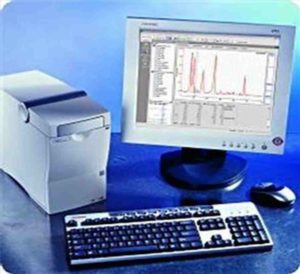
AGILENT 2100 BIOANALYZER SYSTEM
Agilent 2100 bioanalyzer System is an established automated electrophoresis solution for the sample quality control of biomolecules. The system integrates an instrument, data processing software, reagents, and a microfluidic chip specific for DNA, RNA, or protein analysis.
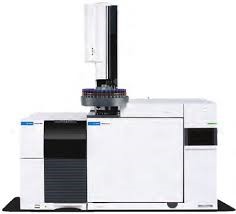
AGILENT 5977B GC/MSD COUPLED 8860 GC SYSTEM
Home Products Gas Chromatography/Mass Spectrometry (GC/MS) GC/MS Instruments 5977B GC/MSD Coupled 8860 GC system.
DESCRIPTION
- The Agilent 5977B GC/MSD is the latest in the series of most trusted single quadrupole GC/MS instruments. It is ideal for labs that focus on applications such as environmental, chemical, petrochemical, food, forensic, pharmaceutical, doping and material testing
- The 5977B GC/MSD Coupled 8860 GC system is among the latest innovations from Agilent, which builds on a long track record of innovation, the High Efficiency Source (HES) and Inert plus Extractor EI source maximize the number of ions that are created and transferred out of the source body and into the quadrupole analyzer. This novel mass selective detector improves sample throughput, analytical performance, and business outcomes, making the 5977B the most popular single quadrupole GC/MS for routine, robust, and reliable use.
APPLICATIONS
The Agilent 8860 GC-MS is an automated system, which offers fast, reproducible and accurate results in a wide range of applications.
Environmental monitoring
- Detection of dibenzofurans, dioxins, herbicides, sulfur, pesticides, phenols, antibiotics in biofluids, environmental samples and natural products (E.g. Fruits, vegetables, herbs, cereals, legumes, flour etc)
Medicine and Sports
- Steroid detection and characterization in biological samples (E.g blood samples for doping)
- Detection of products of metabolic disorders
- Detection of narcotics, barbiturates, alcohols, drugs (anti-histamines, sedatives, hypnotics, and anti-epileptic drugs) in blood and other biological samples.
Food Safety
- Detection of contaminants, aromatic compounds (e.g. terpenes, esters, aldehyde etc), mycotoxins and other secondary metabolites in raw and processed food and beverages.
Research and Development / Pharmaceuticals
- Detection and structural elucidation novel compounds in natural products.
- Identification of impurities in active pharmaceutical ingredients
- Synthesis and characterization of compounds in pharmaceutical biotechnology
Fragrance Analysis / Other Industrial applications
- Detections of impurities and allergens in cosmetics
- Analysis of inorganic gases and aromatic solvents
- Synthesis of cellulose acetate, polyethylene and synthetic fibers.
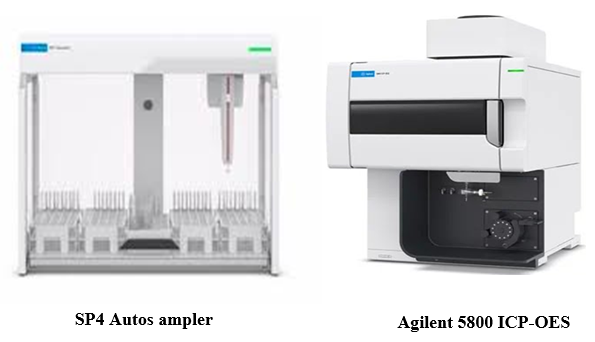
AGILENT 5800 INDUCTIVELY COUPLED PLASMA-OPTICAL EMISSION SPECTROMETER (ICP-OES) WITH SPS 4 AUTOSAMPLER
DESCRIPTION
The Agilent 5800 ICP-OEP with SP4 autosampler is an automate system designed for the detection and analysis of more than 70 elements in the periodic table. ICP-OES uses the capability of the plasma to create ions from the elements contained in the sample. The ions are in turn detected on the basis of their masses and charges. ICP-OES provides qualitative and quantitative information of elements present in the sample.
APPLICATIONS
- ICP-OES is use in many fields: R&D, Quality Control and Quality Assurance, Analytical services and QC/QA for production control of intermediate and final products.
- Other applications include
- Elemental analysis of soils, sediments and sludges
- Determination of nutrients and micronutrients in milk powder
- Elemental analysis of water samples according to US EPA method 601 OD
- Elemental analysis of food and beverages
- Determination of trace elements in human biological samples (e.g. blood, serum, plasma, CSF etc)

